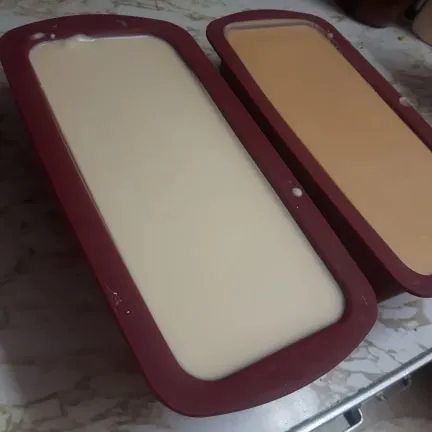Took a small break from blogging but have been trying a bunch of stuff in the meantime.
2 weeks ago I gave some beer soap a go and some milk & honey soap a go.
I use a tallow soap recipe from The Prairie Homestead however I don't do hot process I do cold process instead.
Essentially hot process is cooking the soap so it saponifies and cures a bit faster than cold process which can take anywhere from 8-48 hours to saponify and then 4-6 weeks to cure.
Hot process takes mere hours to saponify and shorter amounts of time to cure.
But I decided to try to experiment with the amount of lye and the time I allow it to sit in the bed.

Source: Mine. Left is beer soap, right is milk & honey.
I ran through a few batches of milk & honey and I found if there's too much lye in the cold process, it leaves lines of lye. While in my experience it doesn't affect me at all, it might be a bit harsh on other's skin. And it's not really sellable.
Too little however and the soap is too soft - it just crumbles.

This was the case with this particular batch. I got about 5 bars out of it that looked and smelled pretty good. A second attempt at pulling the soap out of the mold at hour 5 instead of hour 8 - same result. Not enough lye, it gets crumbly.
Thankfully I can re-use the soap into a different batch of something like a plain or a milk soap so it definitely won't go to waste.
I also find that at the speed you cut tends to make a difference.
If you go slower especially with more soft soap you can expect a crumbly choppy bar. Go a little faster and it cuts beautifully.
These couple things were good to know for future soap making with a bit of trial and error for experience.
Hopefully these tips can help in your soap making endeavors!
